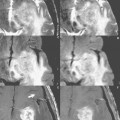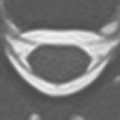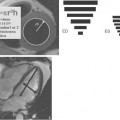38 Susceptibility-Weighted Imaging
Susceptibility-weighted imaging (SWI) employs a high-resolution, velocity-compensated (for flow in all three axes), spoiled 3D GRE scan, and specifically the phase information from this scan, to emphasize susceptibility differences between tissues. With sufficiently long echo times using SWI, lesions or structures with magnetic susceptibility different from neighboring normal brain will possess a phase difference and be depicted with low signal intensity. In the SWI implementation, two types of images are reconstructed, a high pass filtered phase image and a minimum intensity projection, the latter being with phase-weighted magnitude information. SWI has high sensitivity to normal venous blood/flow (due to deoxygenation), high levels of deoxyhemoglobin (acute hemorrhage), hemosiderin (chronic hemorrhage), and iron in the form of ferritin. In common with most MR applications, this technique is further improved at 3 T, due to both increased SNR and more prominent susceptibility related effects. The latter allows TE and thus TR to be halved, markedly reducing scan time.
Stay updated, free articles. Join our Telegram channel

Full access? Get Clinical Tree








